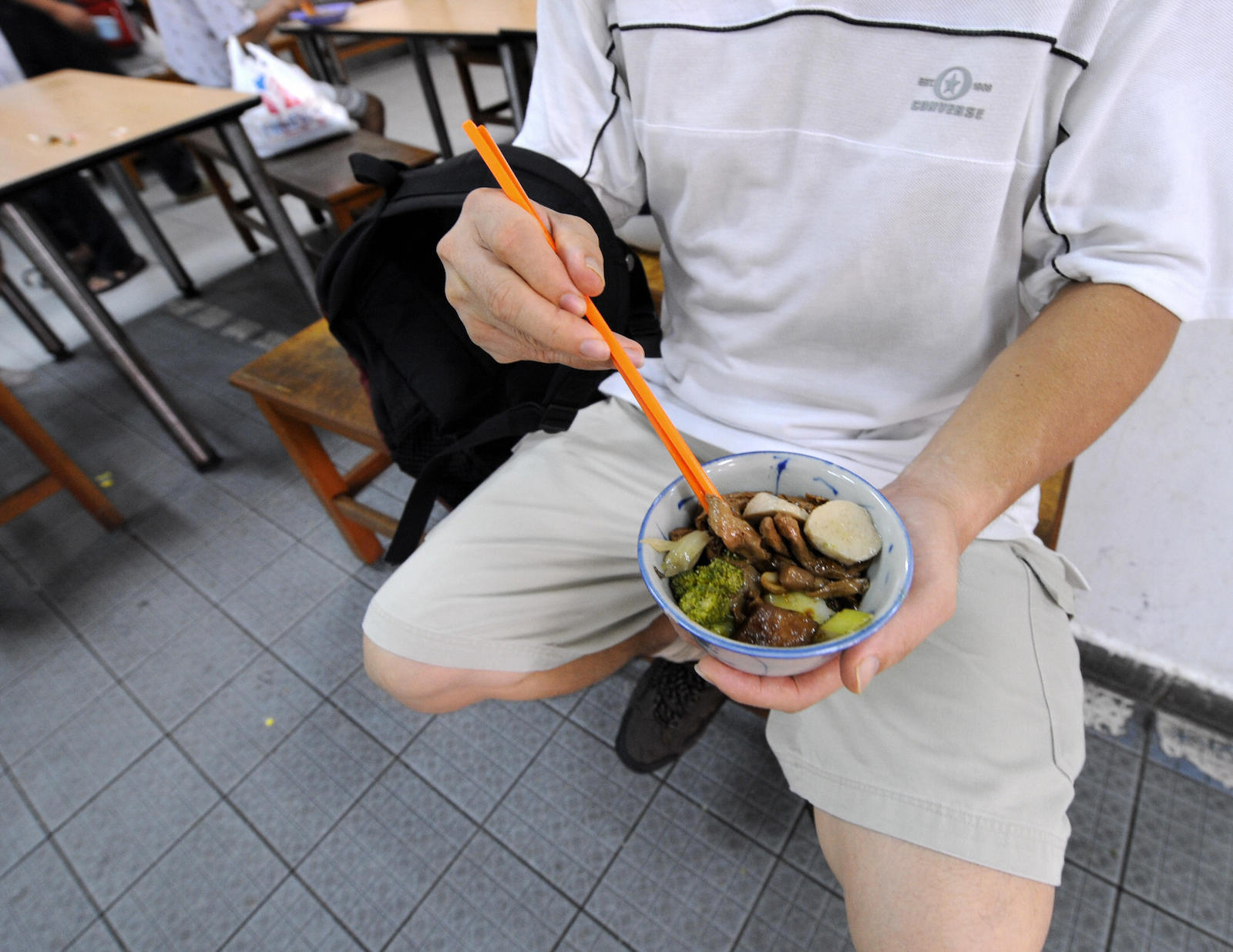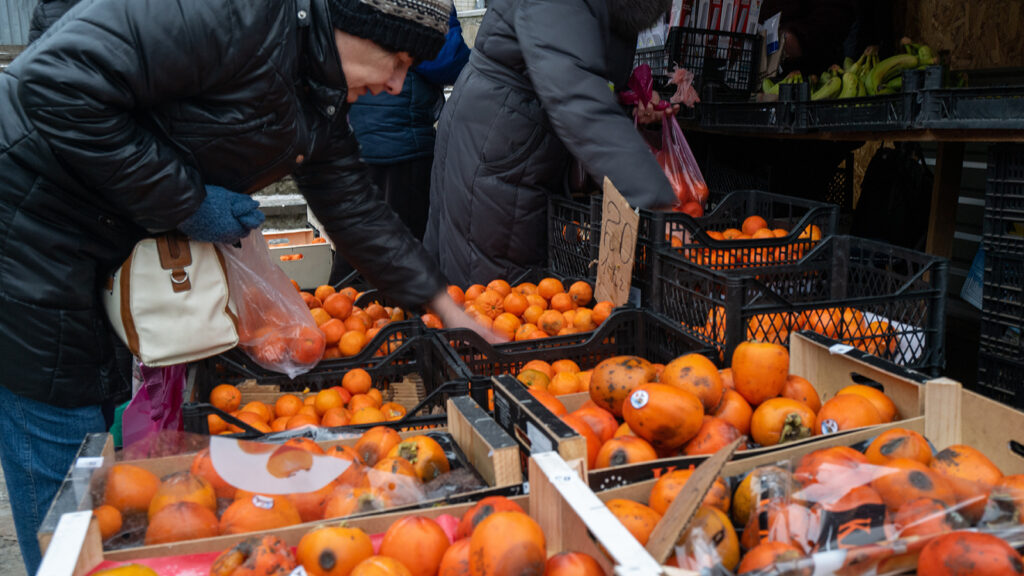The Hidden Hunger in Asia’s Wealthiest Nation

A man eats his free lunch at the Singapore Buddhist Lodge, where free vegetarian meals are served. Food support organizations are an effective tool in extending support to food-insecure households and individuals.
Photo: Roslan Rahman/AFP/Getty Images
Singapore is a highly developed nation serving as a benchmark for economies worldwide. Boasting one of the highest per capita incomes globally, food security for its residents is considered a given; moreover, Singapore was ranked the world’s fourth most food-secure nation in the Global Food Security Index in 2017. This index is a measure of affordability, availability, quality and safety of food supply. However, despite its ranking, food insecurity has been observed in as much as 19 percent of respondents surveyed.
According to a recent report from the Singapore Management University’s Lien Centre for Social Innovation, “while healthy food may be available across Singapore, the question is whether it is accessible to all. Food costs in Singapore are rising, squeezing household budgets,” and “the growing presence of food support organizations and groups is testimony to the issue of household food insecurity in Singapore.”
Exhibit 1: Distribution of Food Insecurity Levels in the Study Sample
What Constitutes Food Security?
“Food security is achieved ‘when all people, at all times, have physical and economic access to sufficient, safe and nutritious food to meet their dietary needs and food preferences for an active and healthy life,” the report says. In numerous cases, the prevailing circumstances are to the contrary, where households do not have or are not confident of having, “economic and physical access to sufficient, acceptable food for a healthy life.’”
The report found a positive correlation between family size and food insecurity—where an increase in family size jeopardized its food security. In addition, over 50 percent of moderate to severely food-insecure individuals hailed from families with single, divorced or widowed parents, showing that these units are more vulnerable to food insecurity. In terms of age, there was no significant difference between the average food insecurity reported by younger (below 50 years) and older (above 50 years) respondents.
Factors Contributing to Household Food Insecurity
With limited access to cultivable land, Singapore’s ability to produce food is constrained. Nonetheless, it has successfully built a well-established food supply system and has achieved, for the most part, stable food security. One key facet contributing to food insecurity, however, is rising food costs—consequently leading to tighter household budgets. While expenses such as housing, fuel and debt are largely inflexible, food tends to be considered a flexible item when it comes to spending, and it is often the first place compromises are made, the report notes.
In addition, lower income is typically associated with food insecurity. However, household income is not the fundamental aspect associated with this concern. Likewise, residents in the lowest income bracket in Singapore are not necessarily the only individuals facing food insecurity. It also extends to households mired in problems such as time constraints, social isolation and health concerns. Moreover, the elderly and disabled who are suffering from chronic health conditions are highly vulnerable to food insecurity on account of their decreased mobility, poor health and lack of accessibility to transportation.
A substantial 57 percent of respondents suffering from chronic health conditions feature in the moderate to severely food-insecure bracket. While it is commonly believed that food insecurity leads to poor health, the reverse is also true, where poor health is a precursor to food insecurity. According to the survey, one in four (26 percent) of the severely food-insecure did not eat enough “due to insufficient time for shopping.” Furthermore, a younger working-age subset may also be affected owing to long working hours and insufficient time for meal preparation.
Exhibit 2: Food Insecurity Experienced Due to Time Constraints by Age
Recommendations
The report identifies three key gaps in service provision that can influence food insecurity in Singapore:
- A lack of nutritious and quality food
- The inefficient targeting of food-insecure households
- A difficulty in addressing root causes of food insecurity
Food support organizations are an effective tool in extending support to food-insecure households and individuals. These support organizations must ensure a keen focus on affected groups and understand their unique needs. In certain cases, it could be a geographical trend, where a particular neighborhood is affected, while in other cases, it could arise among ailing senior citizens or disabled individuals.
The report suggests that, “ration packs should be given to those with the means or health to cook, and vouchers should be given to those who have the mobility to purchase food.” It further adds that the food support ecosystem can benefit “from better coordination and consolidation.”
Exhibit 3: Frequency of Food Support Received by Severely Food-Insecure Households
Apart from ensuring the provision of sufficient food, the nutritional aspect must also be prioritized. This implies the provision of fresh food in ration packs as well as balanced cooked meals. Fresh food can be directed toward individuals or families that have access to cooking equipment and the ability to prepare meals.
Going Forward
Singapore is an affluent nation and, therefore, does not have a poverty index. However, it is evident that relative poverty exists and, despite the wide availability of food, food insecurity remains a concern. In this regard, community kitchens are already operational, where members help prepare and cook meals. A community-based food support system involving vulnerable groups, such as elderly residents or single mothers, would help address several food insecurity challenges such as social isolation, stigma and inadequate food. They could even draw a small income by providing cooking classes to other community members and, in the process, enable the community to come together through food.
The report also underscores the importance of education and increasing awareness about the issue, as that will “help prevent misconceptions [of food insecurity] and increase empathy for food-insecure individuals.” Additionally, education could also result in a “less stigmatized” food-support environment in the country.






